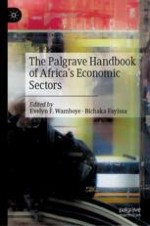2022 | OriginalPaper | Chapter
The African Cotton Sector: Old and New Conundrums
Author : Lorenza Alexandra Lorenzetti
Published in: The Palgrave Handbook of Africa’s Economic Sectors
Publisher: Springer International Publishing
Activate our intelligent search to find suitable subject content or patents.
Select sections of text to find matching patents with Artificial Intelligence. powered by
Select sections of text to find additional relevant content using AI-assisted search. powered by
